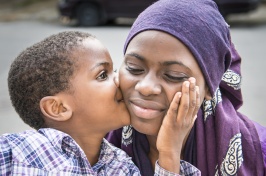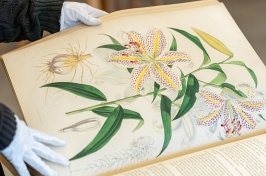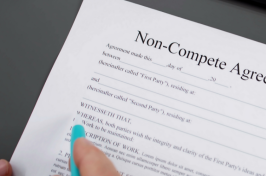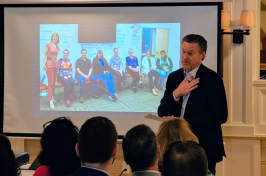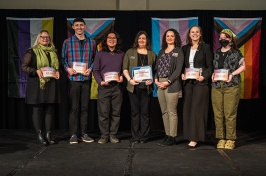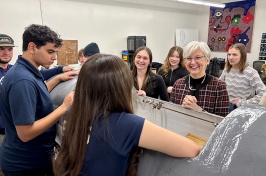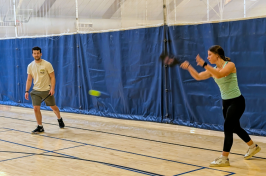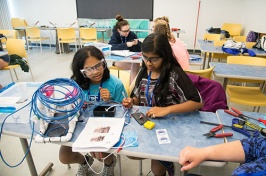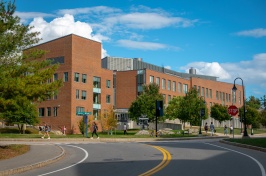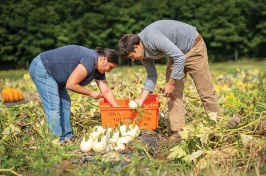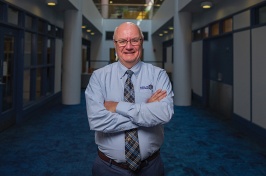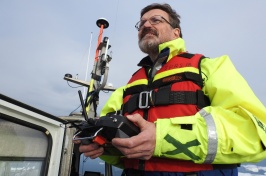UNH Professor's New Book Documents History of Child Survivors of Soviet Terror and Repression
DURHAM, N.H. - In the 74 years that the Communist Party ruled the Soviet Union, an estimated 25 millions "enemies of the people," including children, were arrested, imprisoned in various Gulag institutions, or executed. Many of the children who were orphaned because of their parents' arrest, execution, or death in the Gulag carried the legacy of this dark time into adulthood.
In her new groundbreaking book, "Children of the Gulag," (Yale University Press, 2010) Cathy Frierson, professor of history at the University of New Hampshire, offers a comprehensive documentary history of children whose parents were identified as enemies of the Soviet regime from its inception through Joseph Stalin's death. Millions of children, labeled "socially dangerous," lost parents, homes, and siblings.
The book is part of the Annals of Communism series, a multivolume documentary history spanning the entire 74-year history of the Soviet Union. The authors tell the children's life stories in the context of political history, providing original documents and interviews with survivors.
"The Soviet system, in targeting millions of adults, also targeted or harmed millions of their children as collateral victims in preemptive strikes against persons the state feared might oppose the Communist government's policies. By 1937, the Soviet state had decreed that the wives and children of 'enemies of the people' should be seized by the state, with the mothers typically being sent to forced labor camps for eight-year prison terms. What then became of the children, who were to be separated from their mothers at the age of 18 months? The book seeks to explain how the children came to be victims, what they suffered as pariahs and often as orphans, and how those who survived into adulthood built their lives as citizens of the regime that had shattered their families," Frierson said.
Frierson and Semyon Vilensky, a Gulag survivor and inaugural member of Russia's Presidential Commission for the Rehabilitation of Victims of Political Repression, present top-secret documents in translation from the Russian state archives, memoirs, and interviews with child survivors. The book reveals how such prolonged child victimization could occur, who knew about it, and who tried to intervene on the children's behalf. Frierson and Vilensky show how the emotions from childhood trauma persist into the 21st century, passing from victims to their children and grandchildren. Interviews with child survivors also display their resilient ability to fashion productive lives despite family destruction and stigma.
The book includes surprising information, including the sheer number of child victims of Soviet political repression in the first three decades of Soviet rule, from the revolution in late 1917 to Stalin's death in 1953.
Readers also will learn about:
- The multiple-page instructions issued to the security police in August 1937 on how to arrest wives of "enemies of the people" and how to seize and place their children from age 18 months to 15 years in state institutions.
- The extent of starvation in the Soviet Union in 1918-1953, as well of the primitive nature of living conditions for the "specially resettled" enemies of the people or entire ethnic groups subjected to ethnic cleansing and forced resettlement.
- How often school teachers became these children's Samaritans.
- How children were legally permitted to visit their mothers in the Gulag camps.
- How these children survived, sometimes without adult assistance, on the home front during World War II.
The book has been called "a pioneering study" by Walter Laqueur, editor of "The Holocaust Encyclopedia."
"An essential addition to the budding scholarship on children in the former Soviet Union and to the growing literature on repression and the Gulag under Stalin," said Lynne Viola, one of the leading North American scholars of Stalinism, a professor of history at the University of Toronto.
Frierson has held the Class of 1941 and Arthur K. Whitcomb Research Professorships at UNH and is the author or editor of a number of books about Russia. A Russian historian by training, Frierson spent the waning years of the Soviet Union immersing herself in, and writing about, Russian culture—the attitudes of its intellectuals; the experiences of its common folk.
The University of New Hampshire, founded in 1866, is a world-class public research university with the feel of a New England liberal arts college. A land, sea, and space-grant university, UNH is the state's flagship public institution, enrolling more than 12,200 undergraduate and 2,200 graduate students.
PHOTOS
Cathy Frierson, professor of history at the University of New Hampshire, and author of "Children of the Gulag"
/unhtoday/sites/default/files/newsroom/img/frierson.jpg
Semyon Vilensky, a Gulag survivor, inaugural member of Russia's Presidential Commission for the Rehabilitation of Victims of Political Repression, and co-editor of "Children of the Gulag"
/unhtoday/sites/default/files/newsroom/img/vilensky.jpg
Book cover of "Children of the Gulag"
/unhtoday/sites/default/files/newsroom/img/frierson_gulag.jpg
-30-
Editors and Reporters: To receive a review copy of ""Children of the Gulag,"" please contact Jessica Holahan at Yale University Press, 203-432-0971 or mailto:jessica.holahan@yale.edu"
Latest News
-
August 5, 2025
-
June 25, 2025
-
June 16, 2025
-
June 6, 2025
-
May 15, 2025


